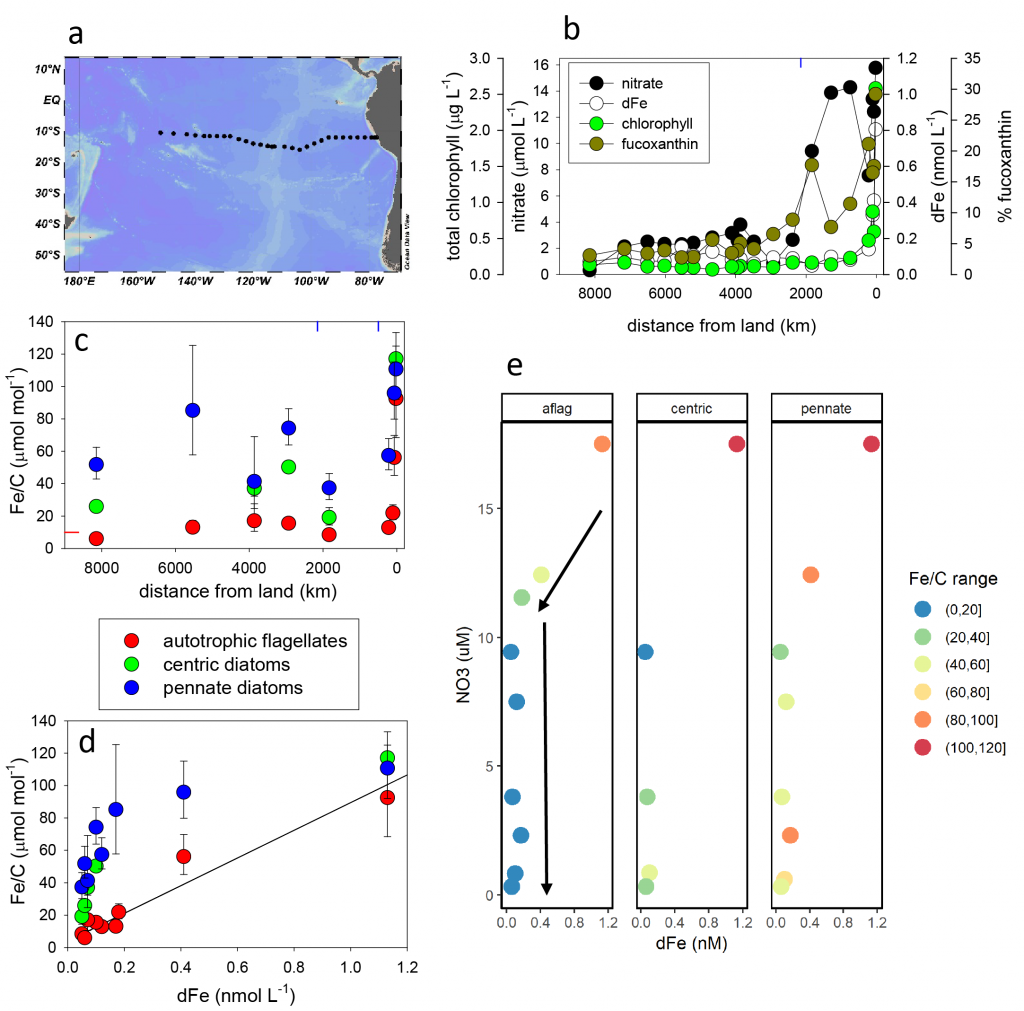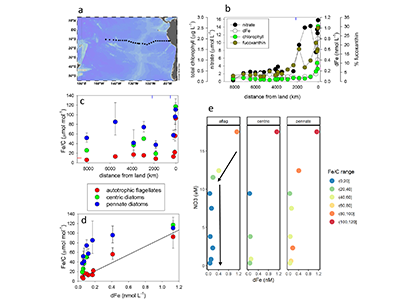The uptake of iron by phytoplankton is a key part of the marine iron cycle, but we still have a rudimentary understanding of the controls on this process. It is generally assumed that dissolved iron availability controls phytoplankton iron. Combining data from the GP16 GEOTRACES section and three other GEOTRACES-compliant cruises in the eastern Pacific, Twining et al. (2020) show that phytoplankton iron contents (aka, quotas) vary 40-fold across environmental gradients. Further, taxa prone to nitrogen limitation such as diatoms accumulate iron more than expected, even under extremely low iron conditions. Modeling indicates that this is a widespread occurrence in the low-Fe oligotrophic Pacific. This study provides the first direct measurements of luxury iron uptake in natural communities and shows how it can vary between diatom taxa, with Pseudo-nitzschia able to accumulate luxury iron even in the low-Fe sub-Arctic North Pacific. These findings demonstrate the importance of biology and ecology to understanding iron biogeochemistry.

Figure 1. Response of iron quotas to nutrient gradients in the South Pacific Ocean. a) location of stations on GP16 cruise, plotted over bathymetry. b) phytoplankton abundance (total Chl a), nitrate, dFe, and relative diatom abundance (% fucoxanthin, a pigment proxy for diatoms) across the onshore-offshore gradient. Data are means of upper 50m at each station. Dashed blue lines delineate putative coastal, HNLC, and oligotrophic regions. c) Taxon-specific Fe quotas (geometric means +/- SE) as a function of location. Dashed red line indicates the optimal Fe/C estimated for open-ocean phytoplankton under low dFe. d) Taxon-specific Fe quotas as a function of dFe. Also plotted is predicted FeCopt. e). Response of taxon-specific Fe quotas to gradients in ambient nitrate and dFe. Symbol color indicates Fe/C (μmol/mol). Arrows indicate direction of cruise track, moving from shelf westward into the gyre.
Authors:
B.S. Twining (Bigelow Laboratory for Ocean Sciences)
O. Antipova (Argonne National Laboratory)
P. D. Chappell (Old Dominion University)
N. R. Cohen (Skidaway Institute of Oceanography)
J. Jacquot
E. L. Mann (University of Maine at Machias)
A. Marchetti (University of North Carolina)
D. C. Ohnemus (Skidaway Institute of Oceanography)
S. Rauschenberg (Bigelow Laboratory for Ocean Sciences)
A. Tagliabue (University of Liverpool)




